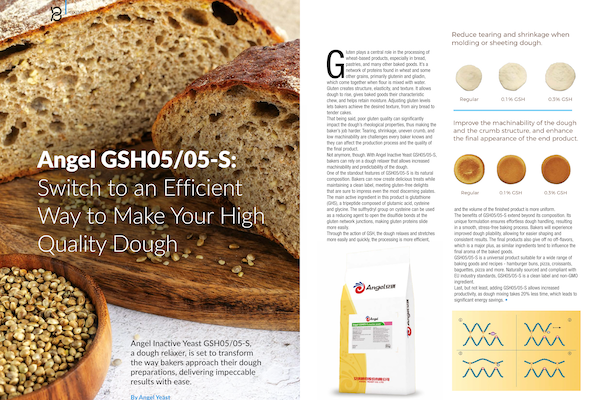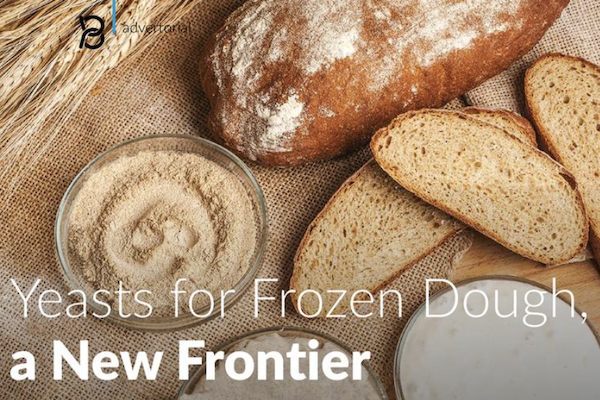-
Home > News & Events > Blog > Yeast & Baking
October 28, 2019
By Yu Zheng
Yeast is an invisible single-celled microorganism, widely used in food fields such as baking, Chinese dim sum, and brewing. The fluffy and elastic dough that we usually chew in bread, steamed buns, biscuits, etc. depends on the gas-producing function of the yeast.
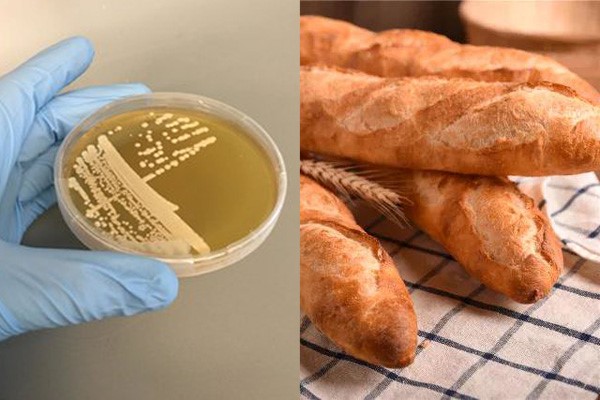
In order to meet different production needs, the yeast products become gradually diversified. It is very important for users to know how to properly use them.
Commercial yeasts on the market can be classified into the following types according to their moisture content:

1. Fresh Yeast
Compressed Yeast
Compressed Yeast is a yeast product that has not been granulated or dried with a moisture content of 65-72%. It is generally pressed into bars, packed in a laminated paper and stored at 0±4°C. Please do not repeat freezing during use. If the temperature is too high, the microorganism in the yeast will soon die, which will lead to the whole decay of the yeast.

Characteristics of Fresh Yeast
Fresh Yeast has many living cells and is easy to fermentation with natural aroma, which means Compressed Fresh Yeast is suitable for the production of frozen dough.
But the disadvantage is that Fresh Yeast is difficult to store and transport.
Packaging and storage: Compressed Fresh Yeast has two kinds of packaging sizes:5-10g sachet for household use and 500g sachet for industrial use. Both must be stored at 0±4°C and the shelf life is 45 days.
Dosage: You will use 2-3 times fresh yeast as much as dry yeast when you make food.
The method for judging the freshness of fresh yeast: The method is summarized as 4 steps: pinch, watch, smell and central test: pinch for judging whether the yeast is harder, more elastic and non-sticky, watch for judging whether the yeast has a white surface and the same color, smell for judging whether the yeast has a natural aroma and no odor and lastly central test for judging whether the yeast has a stable temperature during transportation.
Crumbled Yeast
Crumbled Yeast is the better version of Compressed Yeast for the reason that the former can be directly sold in PVC packaging and also can be directly added to flour. It eliminates the pre-crushing process of using Compressed Yeast and also avoids the risk of packaging paper mixing with flour. Obviously, Crumbled Yeast can facilitate the use of fresh yeast for large industrial users.
2. Instant Dry Yeast
Instant Dry Yeast is the most common yeast product. It is a granular dry yeast, dehydrated from fresh yeast. It is soluble in water, easy to use and store.
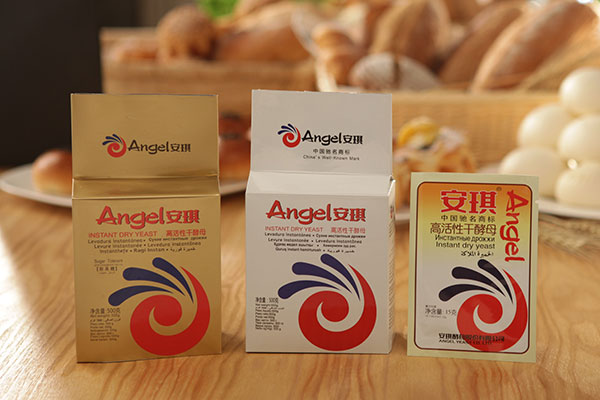
Storage: It can be stored at room temperature. Once opened, it should be used up as soon as possible. After use, discharge the air inside, reseal and put in a cool and dry place.
Usage: directly added to flour with no water.
Packaging and Shelf Life: The yeast is generally vacuum-packed or nitrogen-filled to avoid inactivity. There are three packaging sizes:5g-125g for household use, 500g standard and 5-10kg industrial use. The shelf life is up to 2 years. Beyond 2 years, the yeast still can be used in a slightly larger amount.
Dosage:
For bread, use 1% of flour
For steamed buns or baozi, use 0.3-0.4% of the weight of flour.
You can add 2-3 times more if needed.

3. Active Dry Yeast
Active Dry Yeast is produced by drying with hot air in the final stage of producing fresh yeast. It is easy to store and can be stored at room temperature for 2 years under vacuum, which means it is very stable. However, before use, it must be dissolved in warm water, which is not convenient for users. Hence, it has now been gradually replaced by Instant Dry Yeast.
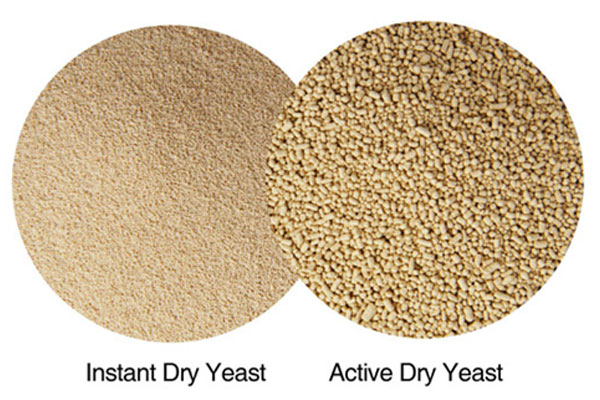
Characteristics of Active Dry Yeast
Active Dry yeast has long shelf life, low cost and is easy to transport. To achieve the same effect, the amount of dry yeast is only 1/2 or even 2/5 of that of fresh yeast, That is, for example the bread can be made using 1 gram of dry yeast, while it takes 2-2.5 grams fresh yeast.
4. Semi Dry Yeast
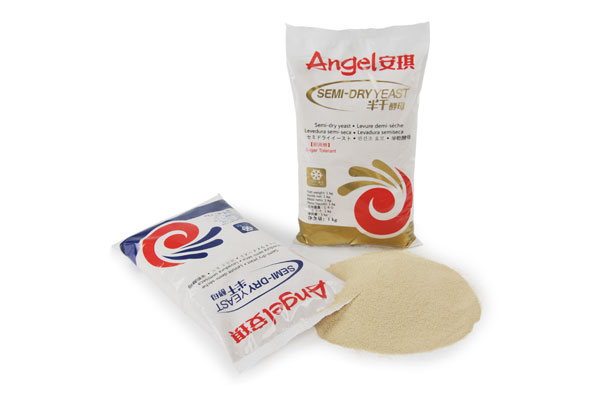
Semi Dry Yeast is a small granular fresh yeast that needs to be frozen. It combines the advantages of both fresh yeast and dry yeast. It has a high vitality, natural aroma and suitability for making frozen dough. It is also easy to use and has a long shelf life. Non-vacuum PV bag packed, it can be stored for 2 years at -18°C with little vitality loss. The recommended dose is the same as dry yeast. The unused semi-dry yeast needs to be frozen immediately to avoid inactivity.
Which kind of yeast is more suitable for making frozen dough?
Both fresh yeast and semi-dry yeast are suitable for making frozen dough, but the fresh yeast has a quicker rate to loss vitality during the shelf life. It is generally recommended to use fresh yeast within 10 days to make frozen dough. However, the semi-dry yeast is very slow to loss its vitality under freezing conditions. So it is better to use semi-dry yeast for frozen dough in areas where it is difficult to transport fresh yeast.

What is the difference between commercial yeast and natural yeast?
Natural yeast refers to the natural cultivation of yeasts or bacteria that are attached to cereals, vegetables, and fruits, which are not specific but numerous. The so-called natural yeast bread is a bread produced by the yeast cultured in this way. However, the natural yeast has a slow fermentation speed. Although it has a unique flavor, it is fermented with a sour smell.
Commercial yeast is selected from natural yeasts and is perfectly suitable for making bread. It is totally made by cultivation but has fast fermentation speed and no foreign bacteria.
What is the difference between high-sugar yeast and low-sugar yeast?
Microorganisms are sensitive to the environment. Changes in the concentrations of food ingredients such as sugar can affect the activity of yeast cells.
High sugar yeast has high tolerance to sugar while low-sugar yeast doesn't.
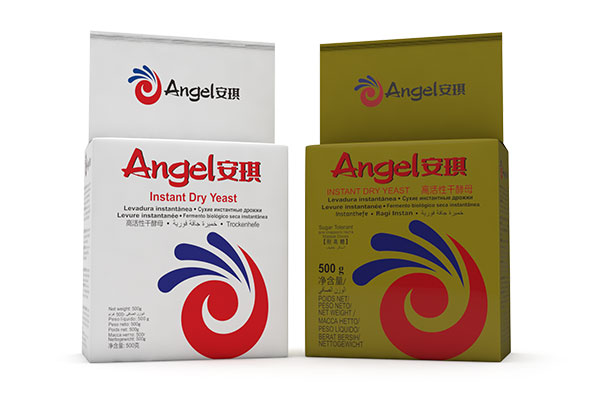
High-sugar yeast uses sugar as an energy source to produce sufficient gas. The yeast is suitable for flour products with sugar concentrations of at least 7% and still has a good fermentation capacity even at 30% sugar concentrations. Its performance is long and stable, applied to various sweet breads, sweet steamed buns, refined fermented snacks and the like.
Low-sugar yeast has excellent fermentation capacity in dough without sugar. The yeast is suitable for flour products with sugar concentrations of less than 7% with which circumstance, it has the advantages of fast fermentation speed and good taste in dough It can be applied to Baozi, steamed buns and scrolls, pies, European bread, Baguette and so on.
The development of science and technology is changing with each passing day. We can look forward to witnessing more yeast products developed to meet different needs near in the future.
About Angel:
Angel Yeast Company is a high-tech listed company specializing in yeast and biotech. Product business covers Yeast and Baking, Yeast Extract-Savoury, Nutrition & Health and Biotechnology fields. It is one of the world's leading companies in the yeast industry. Angel has 12 holding subsidiaries and provides products and services for more than 150 countries and regions.
Press contact:
Angel Yeast Co., Ltd.
Address: 168 Chengdong Avenue, Yichang, Hubei, P. R. China
Tel: +86-717-6369520
Fax: +86-717-6370680
Email: aie@angelyeast.com
